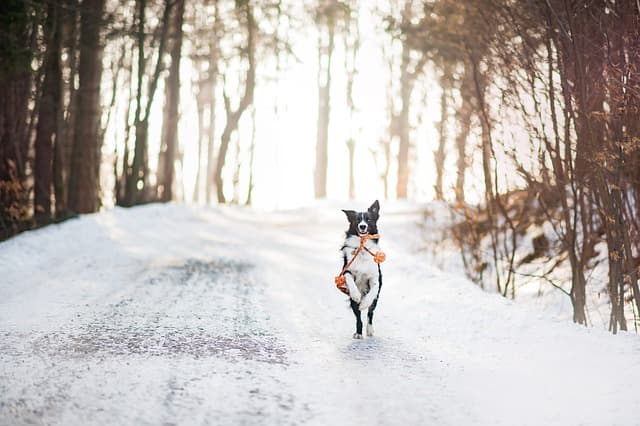Winter in our latitudes comes for a long time, and everyone chooses how best to spend the cold season. Some people enjoy winter sports and try to get out into nature at the first opportunity. Others prefer to wait out the cold at home and go outside less often. But if you have a dog, you have little choice: your pet needs daily walks. Here’s how to make them enjoyable and safe for both of you.
Take care of nutrition
A dog’s body is often trying to prepare for the onset of winter: the coat becomes thicker and the fat layer increases. To help your pet transition comfortably into winter mode, it is recommended to increase the daily diet by about a quarter. If your dog is not overweight, larger portions will allow him to maintain proper heat exchange and feel good outdoors.
Pay attention to the composition of the food: it should contain enough proteins and fats of animal origin. Vitamins and trace elements in the food will support and strengthen the immunity of the dog. In winter, it is especially important to well assimilate nutrients to increase the body’s resistance. For this purpose, it is recommended to enrich the food with special pre- and probiotics.
Keep warm
Excessive cold is one of the main dangers for dogs on a walk. Not only decorative breeds, but also large boxers or bulldogs can freeze: it all depends on the thickness of the coat and the temperature/weight ratio of the animal. Petplan pet insurance company believes that for small dogs the dangerous threshold starts from six degrees below zero, and for medium and large dogs – from twelve degrees of frost.
The main prescription against the cold is to walk briskly. Don’t let your four-legged friend sit or lie in the snow: instead, offer him a quick step or a light jog. This will not only keep your dog warm, but you as well.
The optimal length of a winter walk is 15-20 minutes. During this time, the dog will have time to complete urgent tasks, use up his energy and enjoy the frosty air. As soon as you notice that your dog starts to put his paws up or shiver, go home: it’s time to warm up. For extra protection in extreme cold, you can buy a special suit.
Prepare for darkness
It gets dark early in winter, so most walks will take place at dusk or in the dark. Try not to let your dog off the leash at these times: the sudden appearance of a dog can frighten passers-by and provoke a defensive reaction. If you keep your pet close to you, you can also make sure he doesn’t pick up anything inedible or dangerous from the ground.
Wear a collar that glows in the dark or equip your pet’s costume with reflective elements. This will allow the occasional driver or neighbor to spot your dog and you to find him quickly if you decide to let him off leash for a while.
Beware of chemicals
Snow and ice in cities are usually dealt with with the help of aggressive chemicals. They can not only ruin the paint on cars and the appearance of shoes, but also harm the defenseless paws of dogs. The reagents corrode the skin on the pads and cause pain. To get rid of it, pets are forced to lick their paws and can become poisoned.
Special walking shoes can help protect pets from the harmful effects of chemicals and provide extra protection from the cold. Anti-slip coating will give confidence to your pet’s movements when running on ice or hard ice. If your dog’s shoes are uncomfortable, you can use a paw wax to apply before each walk.
